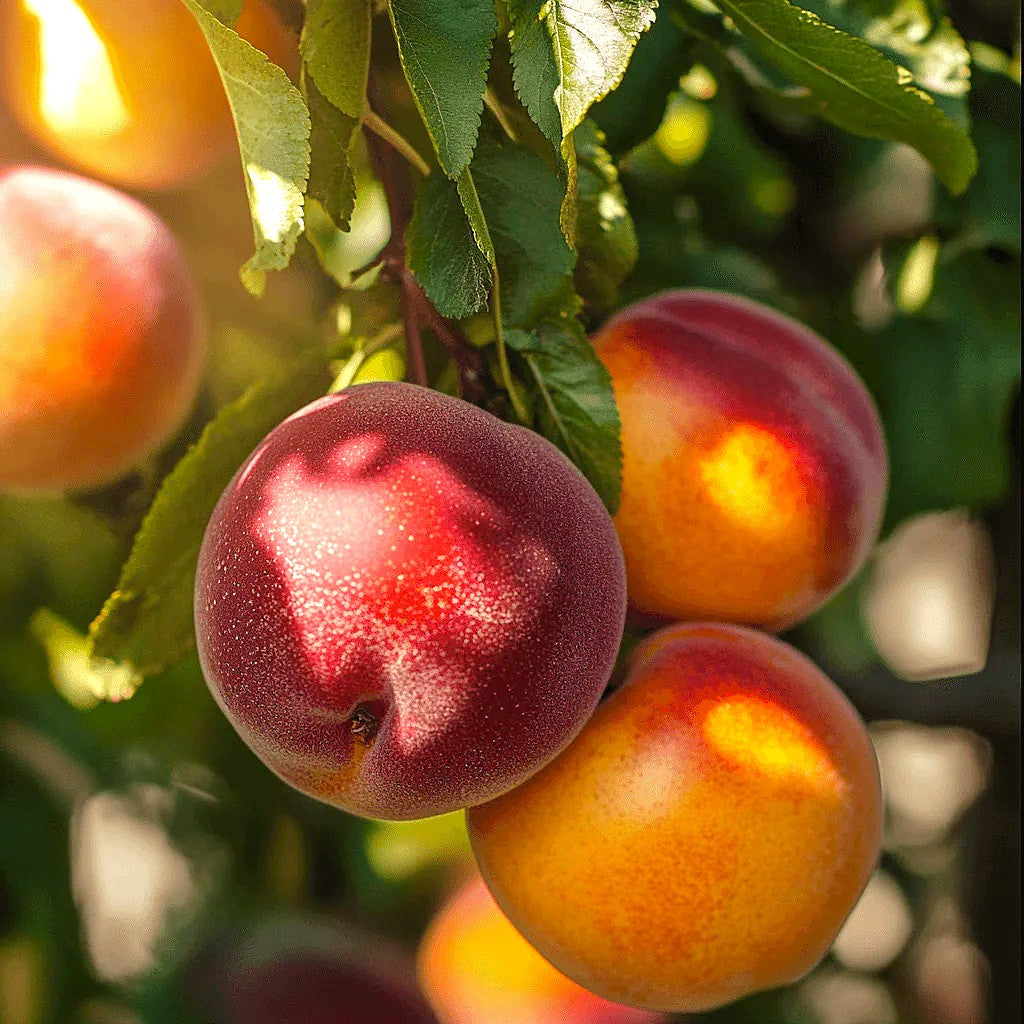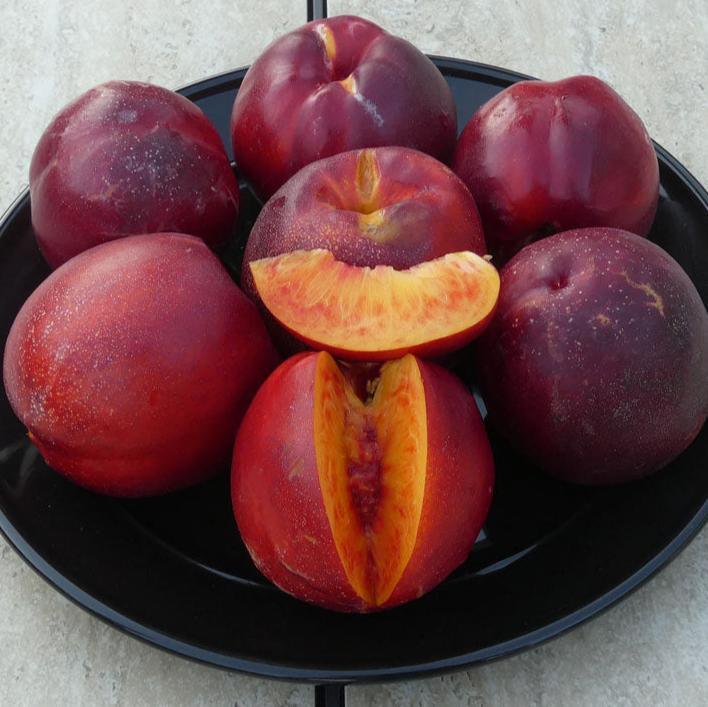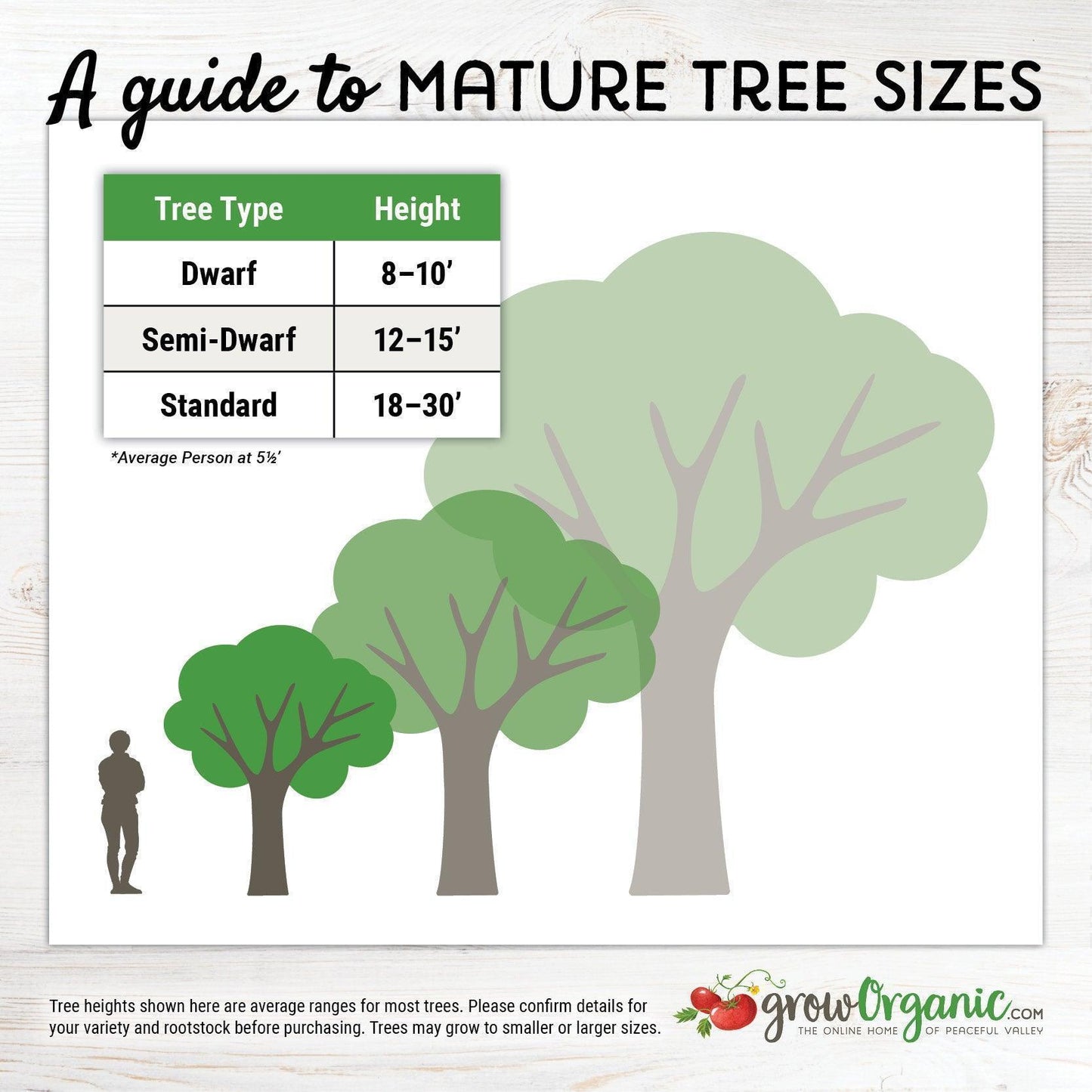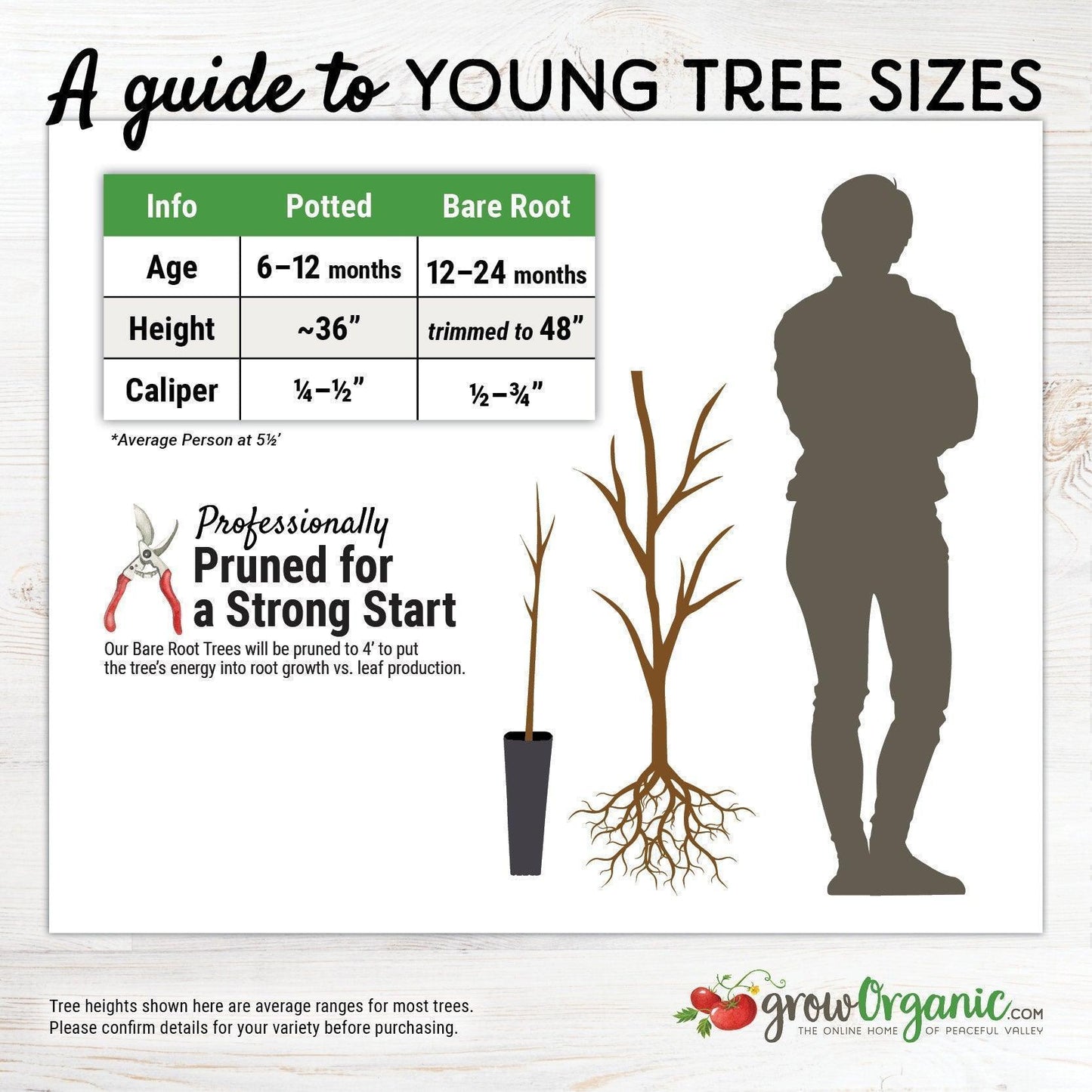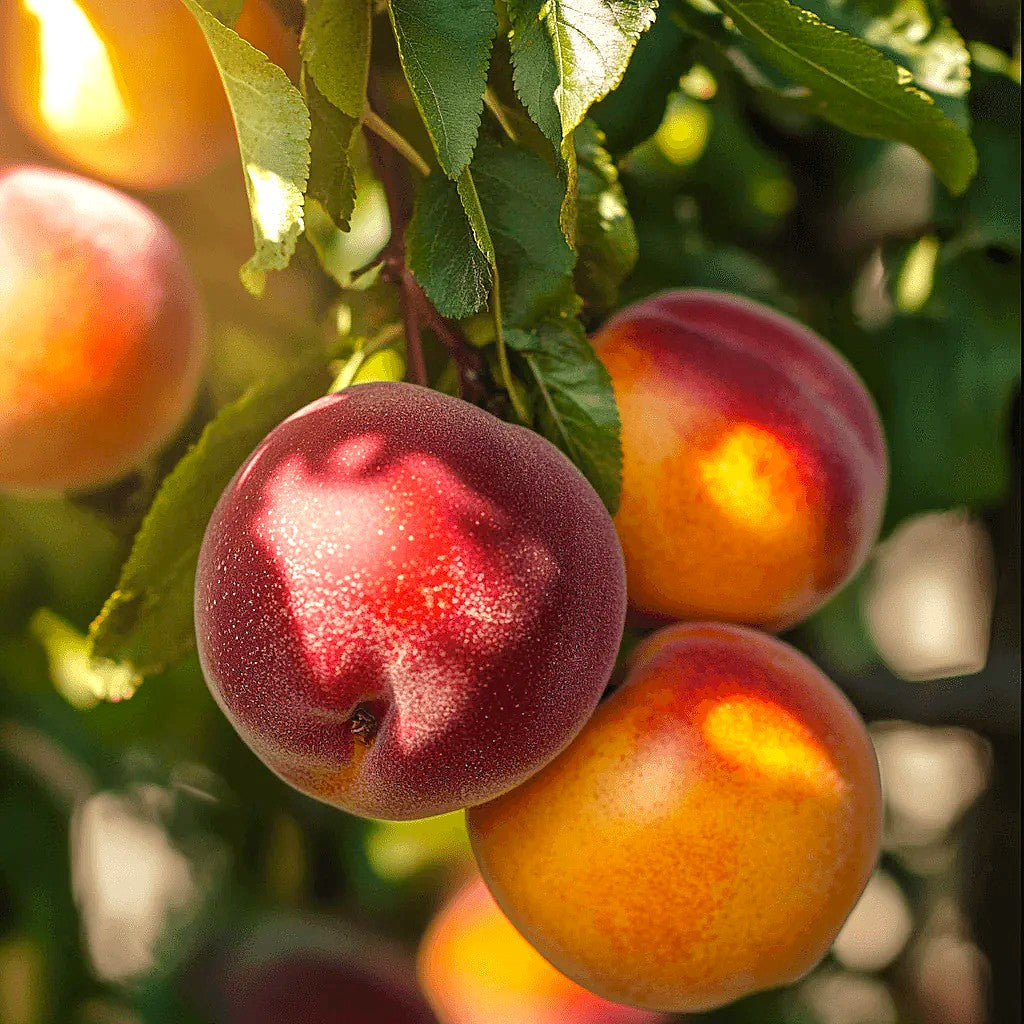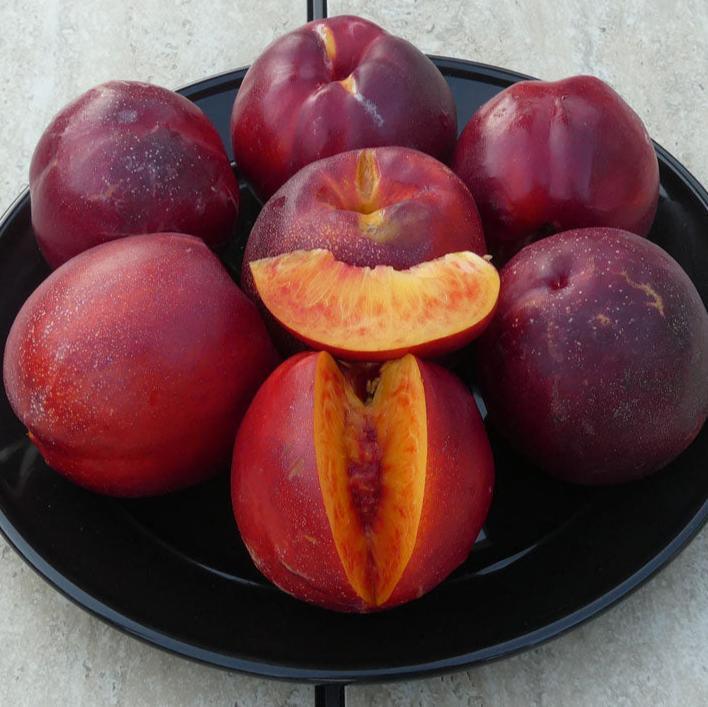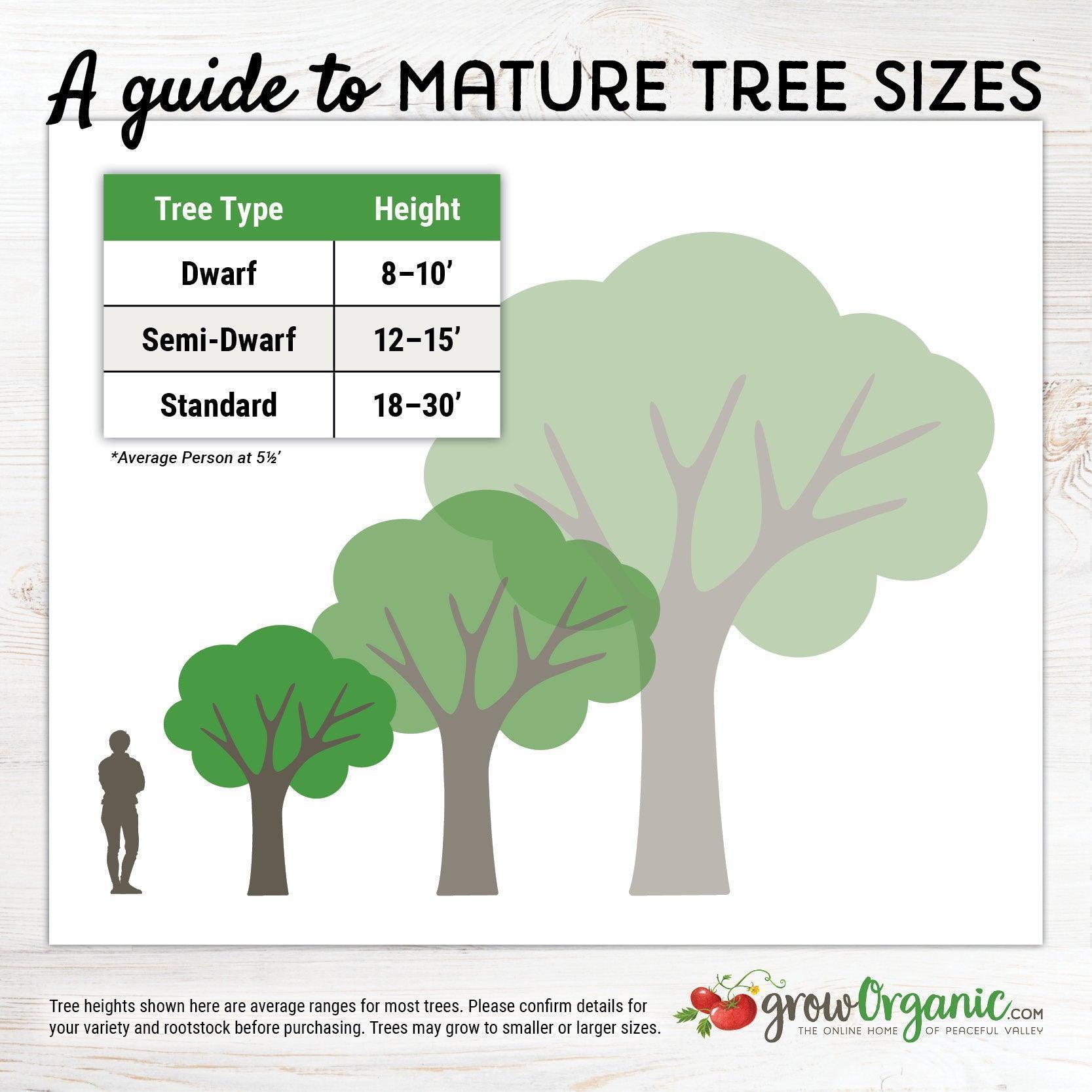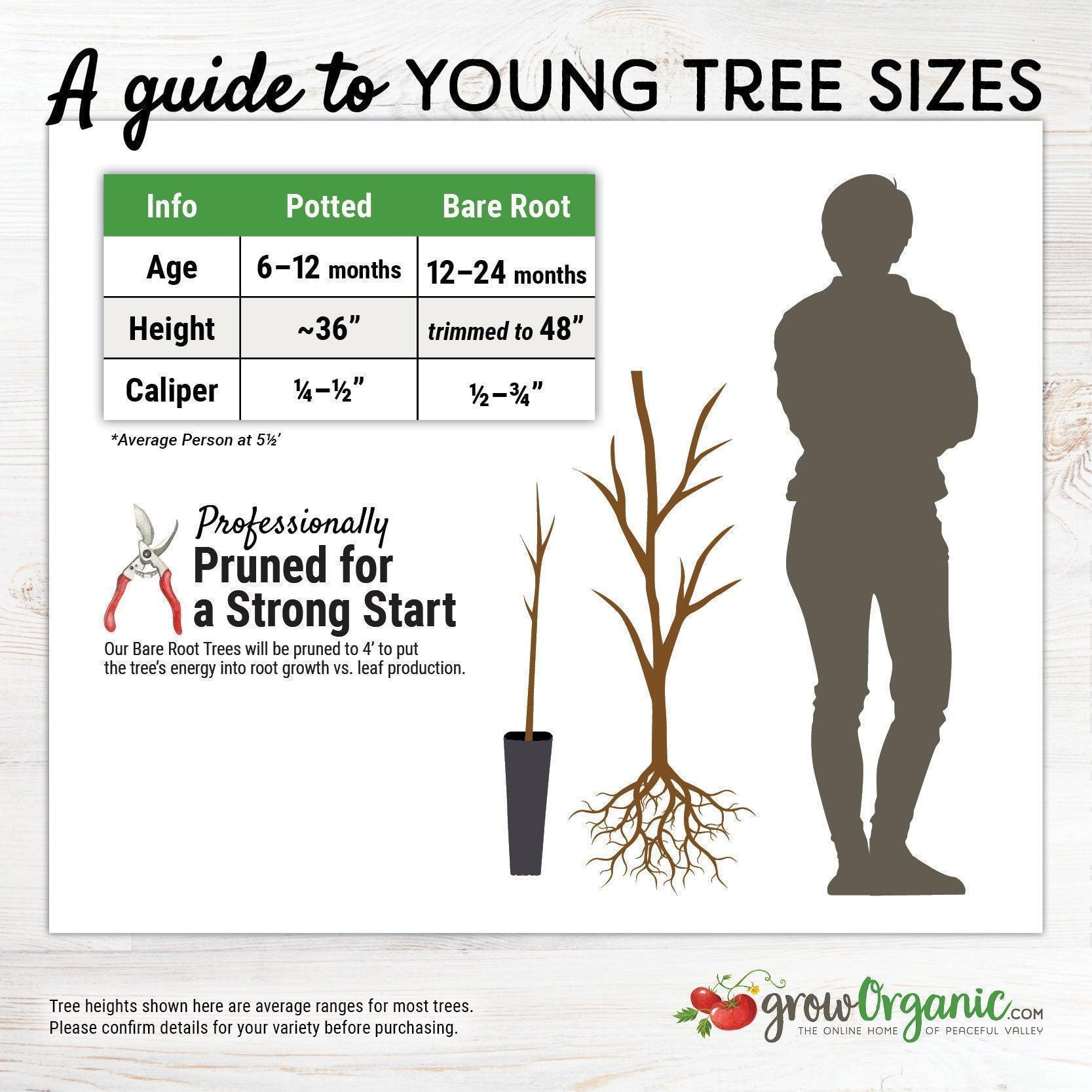Item Number: FT351
Freckle Face Nectarine Tree
Sweet nectarines with bold flavor.
Freckle Face nectarine trees produce sweet, juicy fruit with a distinctive freckled red skin and tender yellow flesh. These medium-sized nectarines are perfect for fresh eating, baking, or making jams and preserves. The tree is self-fruitful and thrives in sunny, well-draining soil, requiring moderate chill hours. Freckle Face nectarines ripen mid-season, delivering reliable harvests of flavorful, high-quality fruit. The tree also showcases beautiful pink blossoms in spring, adding ornamental value to your garden. With its bold flavor and unique appearance, Freckle Face is a standout choice for nectarine lovers.
Semi-Dwarf on Nemaguard rootstock.
- Zones: 6-9
- Chill hours: 400-600
- Bloom Time:
- Harvest: July - August
- Looks: Dark red over yellow skin is loaded with spots speckled
- Personality: Intense nectarine flavor with a bit of acid to bring out the super high sugar that is so much a part of this great nectarine.
- Pollination: Self-fruitful
Growing Freckle Face Nectarine Trees: A Comprehensive Guide
Introduction to Freckle Face Nectarines
The Freckle Face nectarine, a variety of prunus persica, is gaining popularity among gardeners for its intense flavor and unique appearance. This guide will provide you with all the essential information to successfully grow and care for this exceptional tree.
Characteristics of the Freckle Face Nectarine
Freckle Face nectarines stand out from other types of peaches due to their dark red skin speckled with yellow spots. These spots give the fruit its name and signal the exceptional flavor that awaits inside. As a prunus persica var, it shares many characteristics with peach trees, but its smooth, fuzz-free skin is a result of a recessive allele.
Ideal Growing Conditions
Freckle Face nectarines thrive in USDA hardiness zones 6-9, making them adaptable to a wide range of climates in both the northern and southern hemispheres. The tree requires between 400 and 600 chill hours during its dormant season, essential for breaking dormancy and ensuring successful fruit production.
Planting Your Freckle Face Nectarine Tree
Choose a sunny location with well-draining soil and a pH level between 6.0 and 7.0 for planting. Prepare the soil by amending it with organic matter, and ensure the graft union is above the soil line. Water the tree thoroughly after planting, and mulch around the base to retain moisture and suppress weeds.
Watering and Irrigation
Proper watering is crucial, especially during the first few years of growth. Maintain consistently moist soil, watering deeply once a week, and increase frequency during hot, dry periods. As the tree matures, it will become more drought-tolerant, but regular watering during the growing season remains important for optimal fruit production.
Pruning for Health and Productivity
Prune your Freckle Face nectarine tree in late winter or early spring to shape the tree, remove dead or diseased wood, and open the canopy for better light and air circulation. An open-center or vase-shaped pruning style is recommended to enhance fruit production and reduce the risk of fungal diseases.
Fertilization for Vigorous Growth
Apply a fruit tree fertilizer, such as a 6-2-4 formula, in early spring as the tree breaks dormancy. A second application in mid-summer can support fruit development. Be careful not to over-fertilize, as excessive vegetative growth can detract from fruit production.
Pest and Disease Management
Regular monitoring and early intervention are key to keeping pests like aphids, scale insects, and peach tree borers under control. Fungal diseases such as peach leaf curl and brown rot can be prevented with proper pruning, good air circulation, and the application of copper-based fungicides during the dormant season.
Blooming and Harvesting
Freckle Face nectarines bloom in the spring, typically around March or April, and are ready for harvest between July and August. The fruit should be fully colored and slightly soft to the touch when picked. This variety can be enjoyed at various stages of ripeness, whether you prefer it firm and crunchy or soft and juicy.
Enjoying the Fruits of Your Labor
The intense nectarine flavor with a touch of acidity makes Freckle Face nectarines a taste sensation. Whether eaten fresh or used in recipes, these nectarines are a delightful reward for the care and attention you give your tree.
Conclusion
Growing Freckle Face nectarine trees is a rewarding experience for any home gardener. With the right care and attention, you can enjoy bountiful harvests of delicious, flavorful nectarines that will bring joy to your garden and kitchen alike.
Visit our Fruit Tree Central for a listing of all our fruit tree videos and articles.
Visit Tree Characteristics for a listing of all our fruit & nut tree growing characteristics.
For more information about different types of rootstocks and how they influence tree size and growth, see our Tree Rootstock Characteristics Chart.


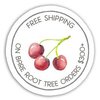
Check Your Zone Compatibility:
Compatible with your zone.
Growing Zone for

Our Guarantee To You
Since 1976, we've served our customers at every stage of growing. Please contact us at any time. We are happy to support and assist you.
Shipping Information
Shipping Information
Cannot ship to the following states: HI, AK, PR, GU, VI
Shipping Weight: 5.0 lb
Dimensions: 47.5"L x 7.3"W x 2.75"H
Features
Features
- Bare Root
- Self-fruitful
Characteristics
Characteristics
Planting & Care
Planting & Care
Useful Information
Useful Information
Guarantee
Guarantee
Limited Dormant Tree & Plant Guarantee
* Claim deadline is June 15th
We guarantee that your dormant tree or plant will arrive in good, viable condition. If your tree arrives in substandard condition, notify us within 3 days of delivery. Please email pictures of the box, inside packaging, the tree and its roots to helpdesk@groworganic.com. We will investigate your claim and process a request to exchange or refund the damaged product.
If your dormant tree or plant has not grown new leaves by June 15th, you may be eligible for our Limited Dormant Tree & Plant Guarantee. This guarantee provides for a store credit for the purchase price of the tree, excluding shipping. Please see the Instructions below.
Important Dates:
- April 1st Dormant trees/plants must be planted in the ground
- May 15th Perform scratch test, if no new leaves have grown
- June 15th Deadline to apply for a dormant tree/plant credit
All required documentation must be received by June 15th for your claim to be considered. Claims or documentation received after June 15th will be denied, without exception. Instructions listed below
Terms and Conditions
We cannot guarantee that your tree or plant will remain alive and healthy after it is received, or bear fruit as there are too many variables in your environment that are beyond our control (i.e. soil preparation, weed and pest control, proper irrigation, chill hours, compatible hardiness for your growing zone, proper choice of pollinator, extreme weather, rodent damage, disease, etc.).
We cannot guarantee that we will be able to provide a replacement tree/plant of the same species either that same growing season or in future years. Customers are responsible for all shipping fees associated with replacement trees and plants.
If we determine that the tree you purchased directly from us is not viable, we will issue you a store credit (not a refund) for the purchase price of the affected dormant tree or plant. Shipping is not included in the dormant tree/plant guarantee. Store credits can be used to purchase any product we sell and are valid for use only until July 1st of the following year.
Historically, 98% of our dormant trees and plants grow and thrive when they have been cared for and planted using our growing guides. Dormant trees and plants must be planted in the ground by April 1st in order to be eligible for credit. If the ground in your area is still frozen solid, you may temporarily plant your tree or plant in a pot.
Potted, non-dormant trees or plants are excluded from this guarantee as they are not dormant at the time of shipment. Evergreen trees such as citrus, avocado and olive trees are not available for credit under the Dormant Tree and Plant Guarantee.
Instructions
We guarantee that your dormant fruit tree or plant will leaf out, if you care for it according to our growing guides. In the unlikely event that your dormant tree or plant does not have leaves by May 15th, follow these simple steps to apply for a store credit:
Before you call or email, please perform a “scratch test” to determine if the tree or plant is still alive. This video shows how to check for live tissue under the bark. Scratch tests need to be done a few inches above and below the graft.
Green Cambium Layer / Living Trees
If the cambium layer under the bark is green, give your tree a little more time. It is still alive, but hasn’t come out of dormancy yet. Check to make sure that it is getting the right amount of deep root water, enough sunlight and that the weather is warm enough for that type of tree/plant to come out of dormancy. Every tree has its own personality and will come out of dormancy at different times. Be sure to submit the required documentation listed below by June 15th, if it doesn’t grow leaves.
Brown Cambium Layer / Dead Trees
If the scratch test shows a brown cambium layer or if your dormant tree/plant doesn’t have leaves by June 1st, please email us at helpdesk@groworganic.com. All required documentation listed below must be received by June 15th for your claim to be considered. To be considered for the guarantee claim, all required documentation must be received by June 15th. Incomplete submissions will be denied.
Required Documentation
- Order number
- Name of dormant tree/plant and the quantity affected
- Photos of each tree or plant showing:
- The roots (tree or plant must be pulled out of the ground)
- The scratch test areas
- The entire tree/plant
We reserve the right to not issue credit for items that have already been replaced. We also reserve the right to require photographic evidence that the tree/plant was not killed by root rot, rodent or mechanical damage.
Share
